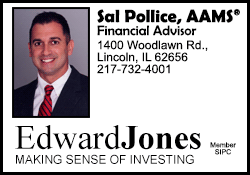|
IMS report: U.S.
prescription drug spending rose 13 percent in 2014
 Send a link to a friend
Send a link to a friend
[April 14, 2015] By
Bill Berkrot
(Reuters) - U.S. spending on prescription
medicines jumped 13 percent to $374 billion in 2014, the biggest
percentage increase since 2001, as demand surged for expensive new
breakthrough hepatitis C treatments, a report released on Tuesday
showed.
|
|
 Demand for newer cancer and multiple sclerosis treatments, price
increases on branded medicines, particularly insulin products for
diabetes, and the entry of few new generic versions of big-selling
drugs also contributed to the double-digit spending rise in 2014,
the report by IMS Health Holdings Inc found. Demand for newer cancer and multiple sclerosis treatments, price
increases on branded medicines, particularly insulin products for
diabetes, and the entry of few new generic versions of big-selling
drugs also contributed to the double-digit spending rise in 2014,
the report by IMS Health Holdings Inc found.
IMS, a U.S. health care information and technology company, does not
foresee a similar U.S. spending jump on prescription medicines this
year.
"We certainly expect to see growth in the market size and spending
level in 2015, but not at the rate of growth that we're reporting
for 2014," said Murray Aitken, executive director of the IMS
Institute for Healthcare Informatics, which compiled the report.
"We know that the patent expiry impact will be larger in 2015 than
it was last year," he said.

New hepatitis C treatments from Gilead Sciences Inc that virtually
guarantee a cure for the liver-destroying virus, with few side
effects, led more than 161,000 patients to start treatment in 2014,
IMS said. That compares to just 17,000 in 2013, when thousands put
off treatment while waiting for the new drugs.
Gilead reported a record-breaking $10.3 billion in first-year sales
of Sovaldi as the $1,000-a-pill drug became the poster child for
intense criticism of the high cost of new medicines.
The report also noted the large number of so-called orphan drugs
that made it to the market in 2014, with the introduction of 18
expensive medicines for rare diseases.
[to top of second column] |

Meanwhile, the entry of new generic versions of branded drugs
reduced spending by only about $12 billion in 2014, compared to an
impact of about $20 billion the year before and $29 billion in
savings in 2012, when cheap generic versions of Pfizer Inc's
top-selling cholesterol drug Lipitor began to flood the market.
The lesser savings from generic drugs in 2014 was due in part to
U.S. Food and Drug Administration sanctions against India's Ranbaxy
that delayed cheap versions of AstraZeneca Plc's blockbuster
heartburn drug Nexium.
IMS, which compiles U.S. prescription drug data for the industry,
also tracked the impact of the Affordable Care Act on medicine
usage, noting a significant rise in prescriptions filled through
government Medicaid programs. While those rose by about 17 percent
overall, the increase was 25 percent in the 28 states that expanded
Medicaid eligibility under ACA.
(Reporting by Bill Berkrot; Editing by Richard Chang)
[© 2015 Thomson Reuters. All rights
reserved.] Copyright 2015 Reuters. All rights reserved. This material may not be published,
broadcast, rewritten or redistributed.
 |